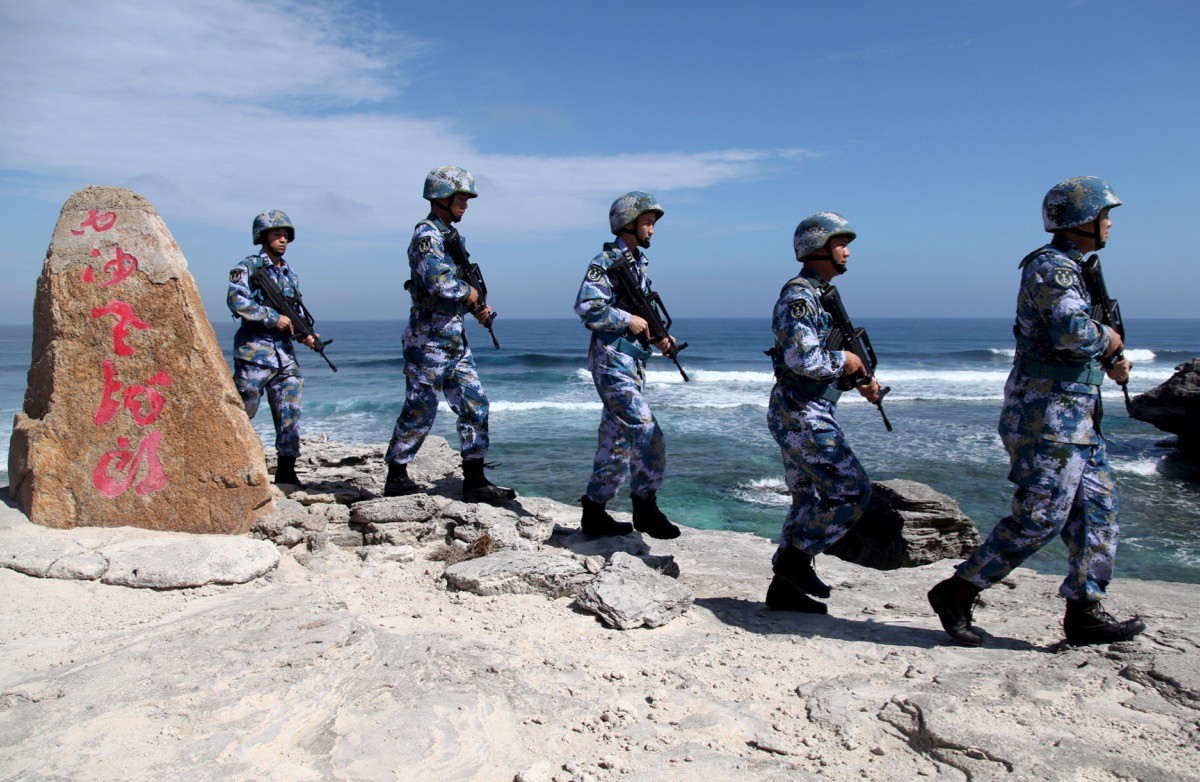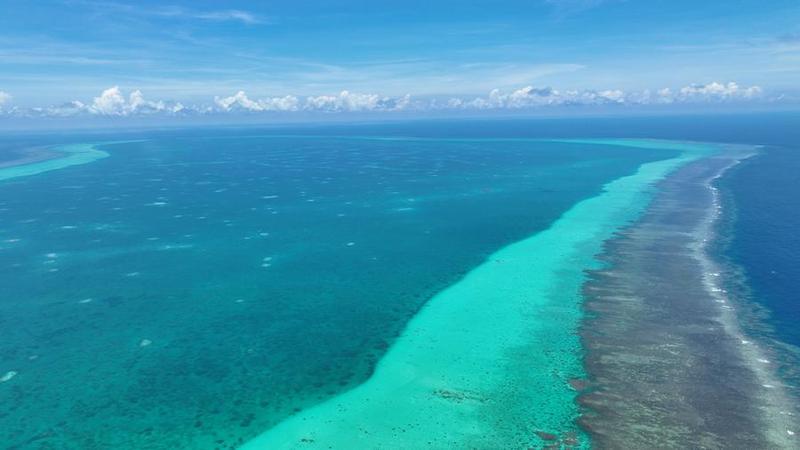Brazen Chinese attempt to browbeat the Philippines draws the condemnation of the world community
The brazen act by the Chinese navy of invading the territorial water of the Philippines and using water cannons to threaten unarmed Filipino vessels has drawn the condemnation of the world community.
On August 5, 2023, a Chinese coast guard vessel opened up with a powerful water cannon on the Filipino ships near the Second Thomas Shoal, where Filipino forces have been stationed for decades on board a rusting, grounded navy ship to establish the presence of the Philippines in the face of attempts by Beijing to extend its illegal claim over the island, located in the South China Sea.
In what has been described as a “David and Goliath situation” by Jonathan Malaya of the National Security Council of the Philippines, six Chinese coast guard ships and two militia vessels blocked the passage of two civilian boats chartered by the Filipino navy to take supplies to the forces of the Philippines stationed on the grounded navy ship. One supply vessel was hit by powerful water cannon of the Chinese coast guard. Only one of the two Filipino boats could deliver food, water, fuel and other supplies to the forces of the Philippines guarding the shoal. The navy ship of the Philippines BRP Sierra Madre was deliberately marooned on the shoal in 1999 and now serves as a fragile symbol to the territorial claim of Manila to the atoll.
During the confrontation, two coast guard ships of the Philippines escorting the supply boats were also blocked by the Chinese coast guard ships at close range and were threatened with water cannons. Three ships of the regular Chinese navy stood by at a close distance, Commodore Jay Tarreila of the coast guard of the Philippines has been quoted as saying in reports from Manila. The stand-off continued for hours. The claim of Manila was reinforced by a video and photographs of the incident shown in a news conference held by diplomats and the coast guards of the Philippines later.
The action of the Chinese ship was “in wanton disregard of the safety of the people on board,”the boats chartered by the Philippine navy, said the Armed Forces of the Philippines, and violated the U.N. Convention on the Law of the Sea of 1982. Describing the incident as “excessive and offensive actions against Philippine vessels”the Philippine military in a statement called on the Chinese coast guard and the Central Military Commission of China “to act with prudence and be responsible in their actions to prevent miscalculations and accidents that will endanger people’s lives.
The United States, the European Union, Australia and Japan have expressed support to the Philippines and concern over the Chinese actions. Washington has renewed a warning that it would be obliged to defend its treaty ally for a long time if public vessels of the Philippines and its forces would come under armed attack, including in the South China Sea over which Beijing wants to extend its hegemony.
A Press release issued by the U.S. State Department dated August 5 is unambiguous in its content. “The United States stands with our Philippine allies in the face of dangerous actions by the Coast Guard and maritime militia of the People’s Republic of China to obstruct an August 5 Philippine resupply mission to Second Thomas Shoal
in the South China Sea,” it said. “Firing water cannons and employing unsafe blocking manoeuvres, PRC ships interfered with the Philippines’lawful exercise of high seas freedom of navigation and jeopardized the safety of the Philippine vessels and crew.
Such actions by the PRC are inconsistent with international law and are the latest in repeated threats to the status quo of the South China Sea, directly threatening regional peace and stability. By impending necessary provisions from reaching the Filipino service members stationed at Second Thomas Shoal, the PRC has also undertaken unwarranted interference in lawful Philippine maritime operations.
As made clear by an international tribunal’s legally binding decision issued in July 2016, the PRC has no lawful claim to the maritime area around Second Thomas Shoal, which is located well within the Philippine’s exclusive economic zone. The United States reiterates, pursuant to the 1982 Law of the Sea Convention, the arbitral decision is final and legally binding on the PRC and the Philippines. The United States calls upon the PRC to abide by the arbitral ruling as well as to respect the freedom of navigation; a right to which all states are entitled.
The United States reaffirms an armed attack on Philippine public vessels, aircraft and armed forces – including those of its Coast Guard in the South China Sea — would invoke U.S. mutual defence commitments under Article IV of the 1951 U.S. Philippines Mutual Defence Treaty.”
Expressing its concern, Australia described the actions of the Chinese coast guard ship as “dangerous and destabilizing.”Japan said it supported the Philippines, adding that the “harassment and action, which infringes on lawful activities of the sea and endanger navigational safety” were “totally unacceptable.”
New Delhi, too, has reiterated its call for adherence to international law and rule-based order in the region and for peaceful resolution of the dispute. “We have always felt that issues need to be resolved, disputes settled peacefully and rules-based order should prevail. Such incidents should not happen again,”spokesperson of the Indian Ministry of External Affairs, Arindam Bagchi has said.
In June 2023, while reiterating the call for a free, open and inclusive Indo-Pacific, India for the first time had joined the Philippines in asking China to abide by a legally binding ruling of 2016 that strongly refuted the outlandish claims of China in its disputes with several south-east Asian countries over the waters of the South China Sea. An international ruling by the Permanent Court of Arbitration, an international body based in The Hague, in 2016 under the U. N. Convention on the Law of the Sea invalidated the claim of China on the whole of the South China Sea.
Cocking a snook at the process of international arbitration, however, China continues to defy the ruling; claiming ownership of virtually the entire South China Sea. The other countries on the receiving end of Chinese high-handed behaviour in the South China Sea are Vietnam, Malaysia, Taiwan and Brunei.
Not to be browbeaten, however, the Philippine government summoned the ambassador of China in Manila on August 7 and presented a strongly worded protest against the use of water cannons by the Chinese coast guard. Jonathan Malaya of the
National Security Council of the Philippines emphasized that Manila would not withdraw its forces from the Second Thomas Shoal. Department of Foreign Affairs spokesperson of the Philippines Teresita Daza said the Chinese ambassador was told China must stop its illegal actions against vessels of the Philippines in the South China Sea, stop interfering in legitimate activities of the Philippines and abide by international law, including the U. N. Convention on the Law of the Seas of 1982.
Among the other littoral states which continue to be at the receiving end of brazen Chinese threats is Taiwan which China intends to invade and occupy. Lately, Beijing has released a new documentary about the preparations of China to occupy Taiwan. As a follow-up to this threatening video, on August 10 Beijing send Chinese naval ships and a large group of fighter jets towards Taiwan in an effort to continue to build military pressure on the self-ruled island. The U.S. however is providing enough military hardware to Taipei to make Taiwan capable of defending itself in case China launches a military aggression.
The Defence Ministry of Taiwan said between August 9 and 10 the Chinese military sent 33 warplanes and six navy vessels which flew across the midline and to the southwest of Taiwan. The Taiwanese military used land-based missile systems to track the aircraft, 10 of which crossed the midline of the Taiwan Strait, an informal boundary that has been considered a buffer between Taiwan and China. The Taiwanese military also tracked with missile systems five of the ships as they sailed in coordination with the flights of the fighter jets.
In response to escalating Chinese military pressure, Taiwan has been buying weapons and fighter jets to shore up its defences. In July 2023, the U.S. announced a $345 million package of sales to Taiwan, including portable air defence systems, intelligence and surveillance capabilities, firearms and missiles. As a part of the attempts by the leaders of the Communist Party of China to fan Chinese nationalism, Beijing has released a new documentary about the preparations of the Chinese army to attack Taiwan and showcasing soldiers pledging to give up their lives if needed to occupy Taiwan. It is a rather quixotic approach to display the military confidence of Beijing against Taiwan, and implicitly the ties of Taiwan with the United States.












